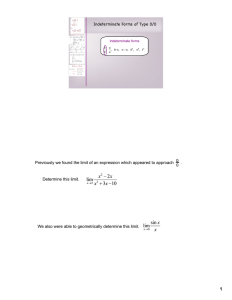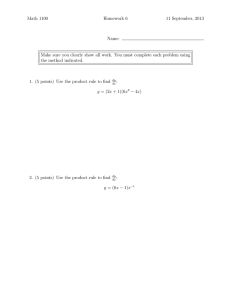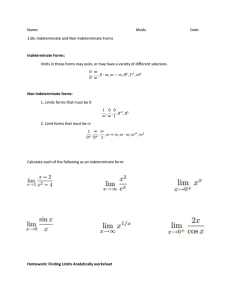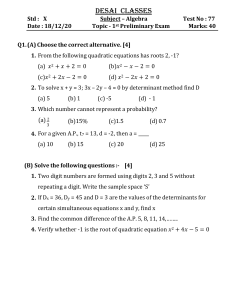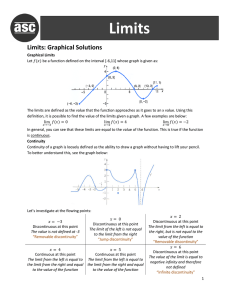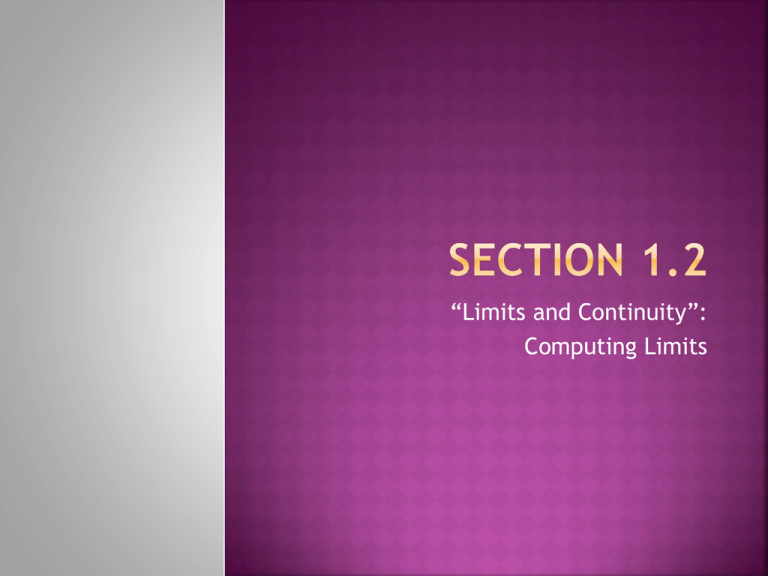
“Limits and Continuity”:
Computing Limits
Calculus,10/E
by Howard Anton, Irl Bivens,
and Stephen Davis
Copyright © 2009 by John Wiley & Sons, Inc.
All rights reserved.
The limit of a constant = that constant because
the y value never changes. (1.2.1 a)
The limit of y=x as x approaches any value is just
that value since x and y are equal.(1.2.1b)
Theorems
1.2.1 c & d from the previous slide
relate to infinite limits in the previous
section.
These
look terrible, but I will explain them
on the next slide and give examples after
that.
a) means that the limit of a sum is the sum of
the limits
b) means that the limit of a difference is the
difference of the limits
c) means that the limit of a product is the
product of the limits
d) means that the limit of a quotient is the
quotient of the limits (denominator not equal to
zero)
e) means that the limit of an nth root is the nth
root of the limit
and a constant factor can be moved through a
limit symbol.
This example utilizes rules a), b), the constant rule
and a variation on rule e).
As we do more of these, you will just be able to jump
directly to the substitution step at the bottom, when
appropriate.
The following example is called indeterminate
form of type 0/0 because if you do jump directly
to substitution, you will get 0/0.
Sometimes,
limits of indeterminate forms of
type 0/0 can be found by algebraic
simplification, as in the last example, but
frequently this will not work and other
methods must be used.
One
example of another method involves
multiplying by the conjugate of the
denominator (see example on next page).
We will learn other possible approaches later
in this chapter.

